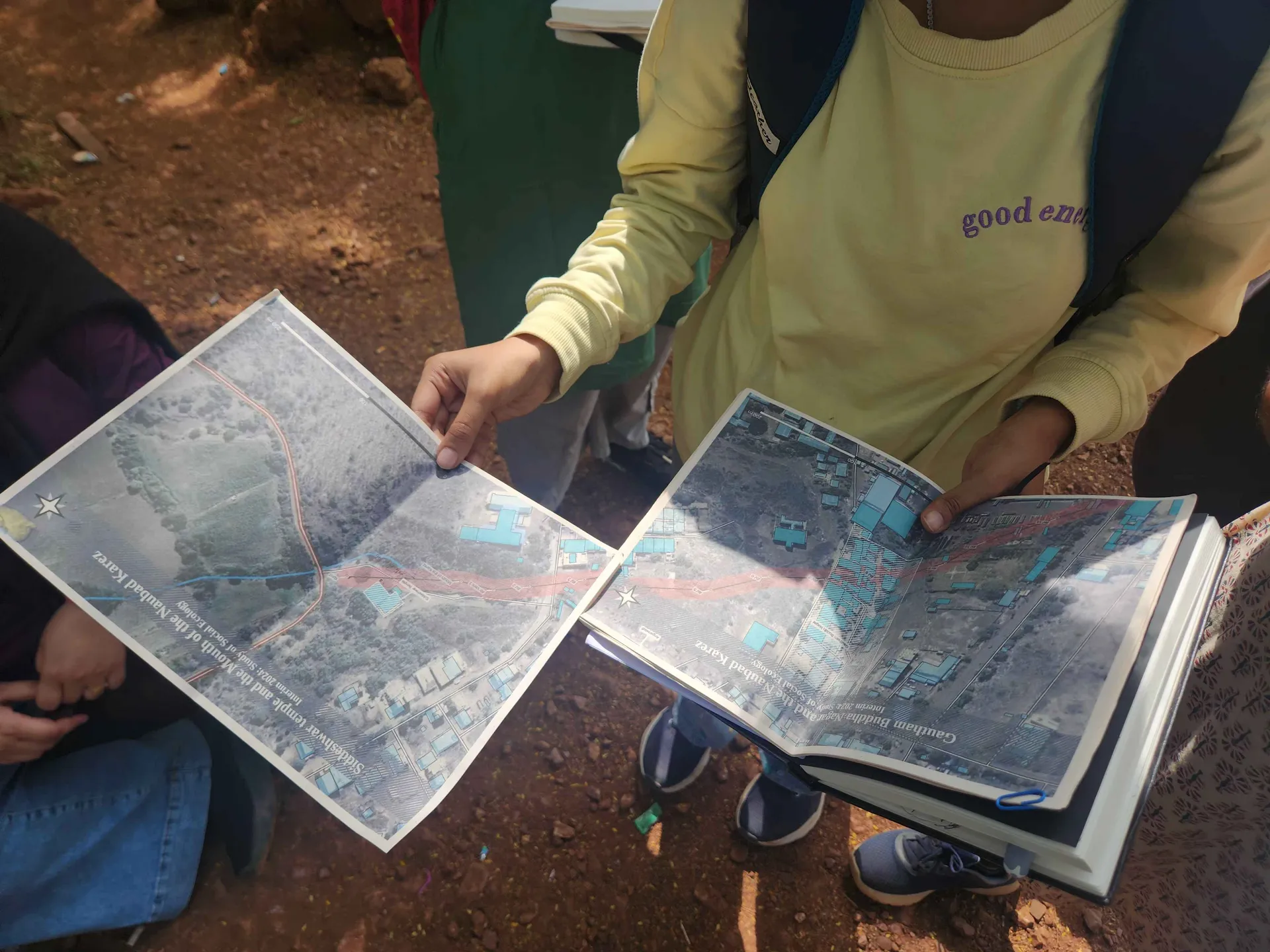PGSL Participatory GeoSpatial Lab
The Participatory Geospatial Lab (PGSL) is a dynamic space envisioned as a nucleus for collaborative mapping, storytelling, and spatial discovery. Entrenched in the idea that the stories, rhythms, and cultures of a place are shaped by its people, Mandala counters conventional notions of mapping, which are often dominated by state-led or top-down approaches. Rather, the Lab seeks to build tools and methods that allow communities to represent their knowledge, histories, and landscapes in ways that resonate with their lived experiences.
Maps are frequently sensed as definitive indications of a place, yet they are naturally selective, reflecting the preferences and perspectives of their designers. In the context of Mandala, mapping becomes a participatory process that allows communities to document their environments while advocating for equitable policies and development. For instance, in Bidar and Channapatna, Mandala is working to create accessible tools that document diverse identities and experiences, such as how caste and class determine housing or how developmental neglect impacts marginalized areas. By making maps in local languages and including community narratives, Mandala seeks to disrupt the exclusivity of traditional cartography and make spatial knowledge more inclusive and actionable.
Mandala also operates as a repository for interdisciplinary projects and collections, gathering information from different sources and situations. For instance, in the Climate Resource Centre (CRC) initiative, Mandala connects insights about grasslands, biodiversity, water harvesting, and agriculture, presenting an interactive platform where tangible and intangible aspects of the work are documented. Likewise, the work on Bidar’s Karez system—a historic water management structure—emphasises the developmental neglect of heritage sites and provides an advocacy tool for influencing policy. These endeavours indicate how mapping can transcend documentation to become a tool for political action and cultural preservation.
